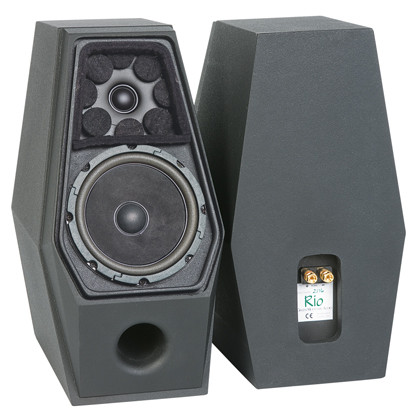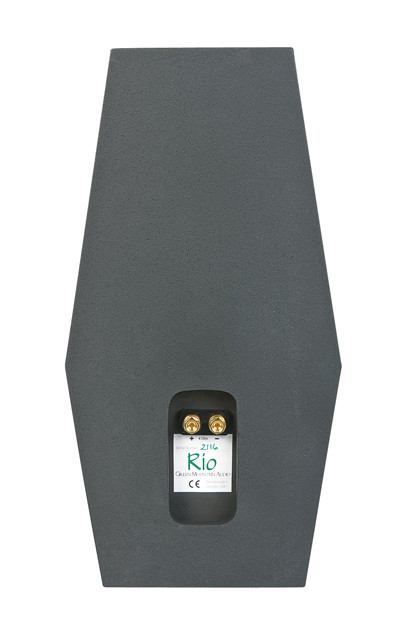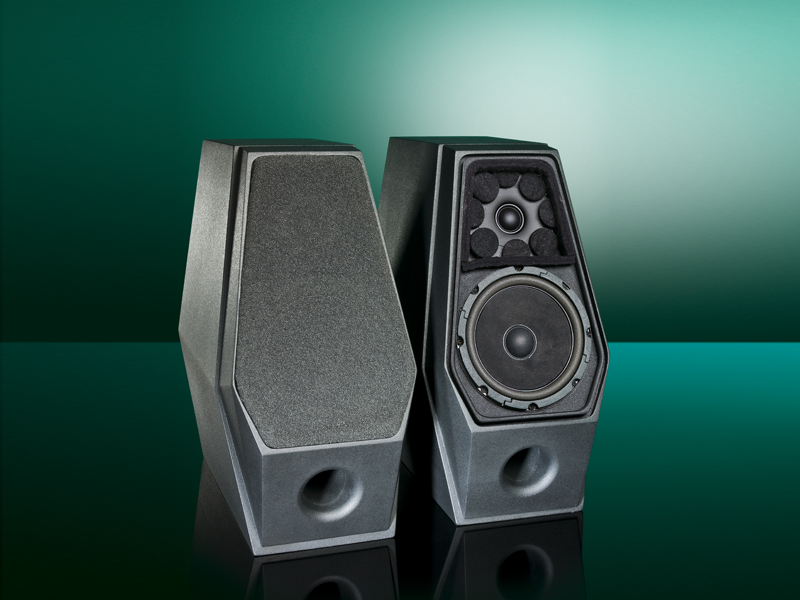TechRadar Verdict
Fabulously tight timing and coherence makes for a very expressive and musically literate performer. Enclosure and ingredient selection show considerable care, while value for money is unquestionably very high
Pros
- +
Brilliant timing
- +
Vivid dynamic expression
- +
Superior phase coherence
Cons
- -
Bass lacks weight and smoothness
- -
Upper midband is rather forward and exposed
- -
In-room positioning is important
Why you can trust TechRadar
The Green Mountain Rio loudspeaker combines time coherent technology and a proprietary 'Balanced-Phase' crossover circuit to bring an impeccable musicality to medium size and small rooms.
So much so, that this discreet little standmount turned out to be one of the most exciting speakers to come my way in years.
It might look small and unassuming, but clever design gives it a marvellous freedom from time-smear, which makes it musically very communicative with vivid dynamic expression. Indeed, the only regret is that the Rio, being GMA's smallest loudspeaker, did have some inevitable limitations in terms of bottom end weight, scale and sheer welly.
Massive marble
A closer inspection reveals numerous examples of the considerable and painstaking care that has gone into selecting every one of its ingredients.
Take its weight, for example. Most standmounts of this size weigh around five to eight kilograms, so it's simple enough to pick one up and pop it onto a stand. The Rio tops the scales at 19 kilograms, more like that of a typical floorstander and that's because the cunningly shaped enclosure has been moulded from Q-stone – a marble/ polyester resin mix.
A lot of mathematical calculation went into designing the dimensions of this very complex multi-faceted enclosure – essentially eight faces, as it's larger in the middle than the top or base. This is partly in order to minimise the focusing of internal reflections and standing waves, assisted by 15 carefully positioned layers of low-density, fibreglass wadding.
Small-to-medium
Because the Rio is primarily expected to be used in small-to-medium size rooms (between 100 and 600 square feet), the designer has tried to limit the dispersion from the two drivers. This is achieved by the shape of the enclosure and, in particular, the way the baffle is inset behind a proud edge, while the tweeter is surrounded by absorbers. All this is meant to to minimise reflections from nearby walls.

Another feature of the enclosure is a 'tilted back' front panel, one crucial reason being that this helps ensure that the listener-to-voice-coil distance is the same for both drive units, in order to maintain accurate phase coherence across the band, especially through the crossover region.
To this end, Green Mountain Audio provides recommendations for the optimum stand height for any given seated ear-height and listening distance. Relatively low (e.g 500-millimetre) stands are suggested.
Similar care has clearly gone into selecting the other ingredients. The bass/mid driver has an 'under-hung' voice-coil, operating in a large field generated by neodymium magnets. The lightweight (damped, pressed steel) 153-millimetre frame accommodates a 115-millimetre diameter cone made from a mix of paper and carbon fibre. The tweeter has a 25-millimetre doped fabric dome diaphragm with a relatively wide (twomillimetre) surround.
Internal wiring consists of Audio Magic Teflon-insulated 14 gauge (1.6-millimetre) silver-plated OFC feeding the bass/mid driver and Jena Labs polyethylene insulated, cryogenically treated 22 gauge (0.64-millimetre) OFC.
The crossover also uses high-quality components and is essentially a simple first order (six-decibel/octave) affair, albeit modified by a Zobel network. The objective is to minimise phase shift right across the band, and a very impressive +/-2 degrees, 200hz- 8.5khz is claimed.
Texture-Koting
The cast Q-stone marble composite enclosure gives massive weight and rigidity, as well as an interesting and clearly effective shape. It can be difficult to achieve an acceptable surface finish with such material, but the black Texture-Kote preparation used here gives a sort of suede look and feel that is very acceptable.
Enclosure detailing also looks very good, above and below the thin acoustic foam grille, which may be left in place without influencing the sound in any way.
A single pair of Vampire Wire socket/binder terminals are fitted, fashioned from solid brass and then silver-and gold-plated.

State-of-the-art
The Rio might seem rather costly for a compact standmount, but the bottom line must always be to question whether a component actually delivers sound quality commensurate with its price. In this case there's absolutely no doubting the exceptional overall sound of the little Rio's.
Naturally the small size will limit the bass weight and warmth to a significant degree, but over the rest of the audio band it delivers splendid sound-quality. The top-end might, perhaps, have been a little sweeter, but the midband expression and coherence truly approaches the state-of-the-art.
This exceptional performer is way ahead of its peers in delivering a vivid and engrossing musical experience, so value for money is, therefore, unquestionably very high.
Vivid excitement
Once set up, the impressive strengths of these compact speakers quickly becomes obvious. They do show some limitations: the small size and high-sensitivity inevitably restricts the amount of bass weight and warmth, but experimenting with positioning does result in modest changes.
However, these are less than expected, so the best advice has to be to experiment in situ to achieve the best results, even though smooth, deep bass seems unlikely to be on the agenda here.
Furthermore, there's also some upper midband forwardness that some listeners (depending on the source) might find a little uncomfortable, but which I found easy enough to get used to. In every other respect this loudspeaker is rather wonderful.
Best of all is its exceptional speed and minimal time-smear, which brings a brilliant immediacy and tight, solid focus to the reproduction of instruments and voices, creating vivid dynamic expression and an unusual degree of realism. It's all very realistic, as is that most difficult of tests – single speaker mono.
This freedom from timesmear in loudspeakers is very important, because it does much to break down the barrier between 'real' and 'reproduced'. The closer you get to 'real', the less hard the brain has to work to interpret what the ears hear and the more relaxing the listening experience becomes.
The advanced enclosure seems very effective, both in banishing any box coloration and in providing a measure of control over dispersion. The latter probably contributes to the relative consistency of the Rio's sound, irrespective of positioning, as well as its fine stereo focus and general image consistency.
Time is tight
Loudspeakers as phase-accurate as these are very rare, but some listeners (not all!) will find them quite irresistible. The tight time focus of the Rios reminds me a little of the Rehdekos, which I keep as a reference, though the Rios are smoother and less extreme, which will probably make them rather more generally acceptable.
There's no denying the criticisms of a lack of smoothness and weight at the bass end of things and the upper mid forwardness. But if those limitations are considered acceptable, the Green Mountain Rio will bring excellent communication skills to the party and considerable musical pleasure to listeners.
Follow TechRadar Reviews on Twitter: http://twitter.com/techradarreview
